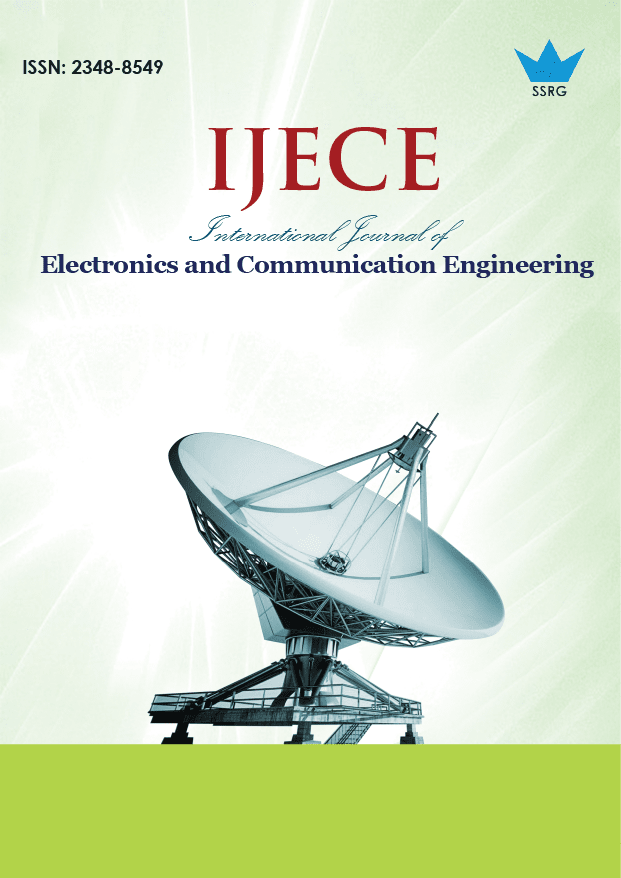Enhancing Sugarcane Disease Classification Using Transfer Learning with Convolutional Neural Networks

| International Journal of Electronics and Communication Engineering |
| © 2025 by SSRG - IJECE Journal |
| Volume 12 Issue 3 |
| Year of Publication : 2025 |
| Authors : Meenakshi Thalor, Chinmay Nakwa, Sanjay Mate, Ashpana Shiralkar |
How to Cite?
Meenakshi Thalor, Chinmay Nakwa, Sanjay Mate, Ashpana Shiralkar, "Enhancing Sugarcane Disease Classification Using Transfer Learning with Convolutional Neural Networks," SSRG International Journal of Electronics and Communication Engineering, vol. 12, no. 3, pp. 151-160, 2025. Crossref, https://doi.org/10.14445/23488549/IJECE-V12I3P115
Abstract:
The economic implications of sugarcane diseases on local farmers in India are significant and multifaceted, affecting not only their immediate yields but also their overall financial stability and livelihoods. About 70 percent of India's rural households still primarily depend on agriculture for their livelihood. As a cash crop, sugarcane holds a very important place in India's agrarian economy. India is not only the largest consumer of sugar but also its second-largest producer. Identifying the diseases in their initial stages helps not only the farmer but also reduces the burden on the country in many aspects. This paper discusses DenseNet, VGG, and ConvNeXt for classifying diseases in sugarcane plants, along with the detailed experimentation conducted. Based on evaluation metrics, ConvNeXt outperforms with 96% accuracy compared to DenseNet and VGG architectures on sugarcane disease detection.
Keywords:
ConvNeXt, Deep Learning, DenseNet, Sugarcane dsisease, VGG.
References:
[1] India becomes Chair of International Sugar Organisation (ISO) for 2024 to lead Global Sugar Sector, Ministry of Consumer Affairs, Food & Public Distribution, 2023. [Online]. Available: https://pib.gov.in/PressReleaseIframePage.aspx?PRID=1979507#:~:text=In%20its%2063rd%20council,of%20the%20organisation%20for%202024.
[2] Production - Sugar, United States Department of Agriculture Service, 2024. [Online]. Available: https://www.fas.usda.gov/data/production/commodity/0612000
[3] Shilpita Das, and Joanna Brown, “Sugar Annual,” United States Department of Agriculture Service, Report, pp. 1-14, 2024,
[Publisher Link]
[4] “Sugarcane Brief Note,” National Food Security Mission, Report, pp. 1-11, 2016.
[Publisher Link]
[5] Arpan Kumar, and Anamika Tiwari, “Detection of Sugarcane Disease and Classification using Image Processing,” International Journal for Research in Applied Science & Engineering Technology, vol. 7, no. 5, pp. 2023-2030, 2019.
[CrossRef] [Google Scholar] [Publisher Link]
[6] J. Jernisha et al., “Plant Growth Promoting Microorganisms and Emerging Biotechnological Approaches for Sugarcane Disease Management,” Journal of Pure and Applied Microbiology, vol. 8, no. 4, pp. 2205-2217, 2024.
[CrossRef] [Google Scholar] [Publisher Link]
[7] A. Vivekreddy et al., “Artificial Intelligence Framework for Multiclass Sugarcane Leaf Diseases Classification Using Deep Learning Algorithms,” Journal of Theoretical and Applied Information Technology, vol. 102, no. 10, pp. 4277-5290, 2024.
[Google Scholar] [Publisher Link]
[8] Rahul Sharma et al., “Plant Disease Diagnosis and Image Classification Using Deep Learning,” Computers, Materials & Continua, vol. 71, no. 2, pp. 2125-2140, 2022.
[CrossRef] [Google Scholar] [Publisher Link]
[9] Aravind Krishnaswamy Rangarajan, Raja Purushothaman, and Aniirudh Ramesh, “Tomato Crop Disease Classification using Pre-Trained Deep Learning Algorithm,” Procedia Computer Science, vol. 133, pp. 1040-1047, 2018.
[CrossRef] [Google Scholar] [Publisher Link]
[10] Sakshi Srivastava et al., “A Novel Deep Learning Framework Approach for Sugarcane Disease Detection,” SN Computer Science, vol. 1, pp. 1-7, 2020.
[CrossRef] [Google Scholar] [Publisher Link]
[11] Swapnil Dadabhau Daphal, and Sanjay M. Koli, “Enhancing Sugarcane Disease Classification with Ensemble Deep Learning: A Comparative Study with Transfer Learning Techniques,” Heliyon, vol. 9, no. 8, pp. 1-19. 2023.
[CrossRef] [Google Scholar] [Publisher Link]
[12] Nirmal Sankalana, Swapnil Daphal, and Sanjay Koli, Sugarcane Leaf Disease Dataset, Kaggle, 2024. [Online]. Available: https://www.kaggle.com/datasets/nirmalsankalana/sugarcane-leaf-disease-dataset/
[13] Gao Huang et al., “Densely Connected Convolutional Networks,” arXiv Preprint, pp. 1-9, 2018.
[CrossRef] [Google Scholar] [Publisher Link]
[14] Anwar Abdullah Alatawi et al., “Plant Disease Detection using AI based VGG-16 Model,” International Journal of Advanced Computer Science and Applications, vol. 13, no. 4, pp. 718-727, 2022.
[CrossRef] [Google Scholar] [Publisher Link]
[15] Zhuang Liu et al., “A ConvNet for the 2020s,” arXiv Preprint, pp. 1-15, 2022.
[CrossRef] [Google Scholar] [Publisher Link]

 10.14445/23488549/IJECE-V12I3P115
10.14445/23488549/IJECE-V12I3P115